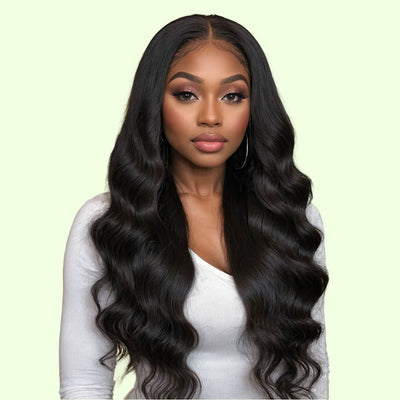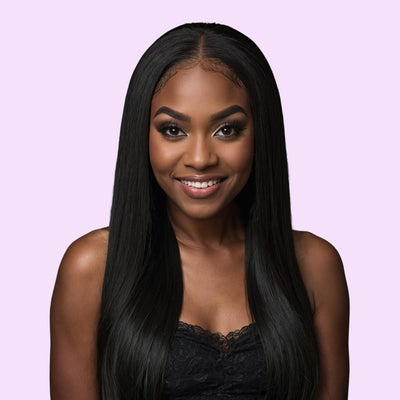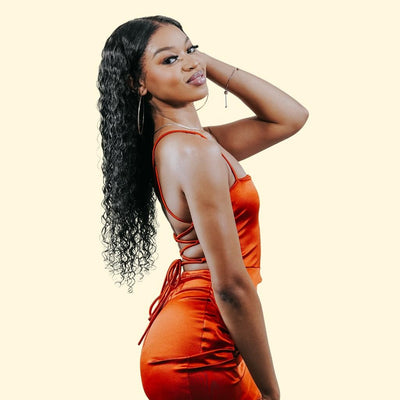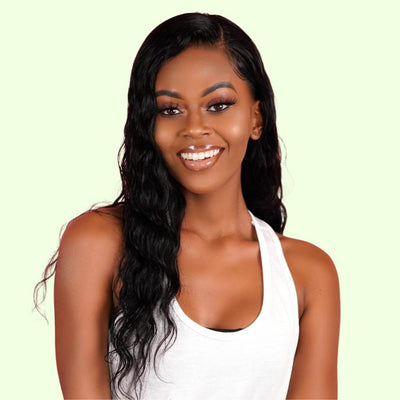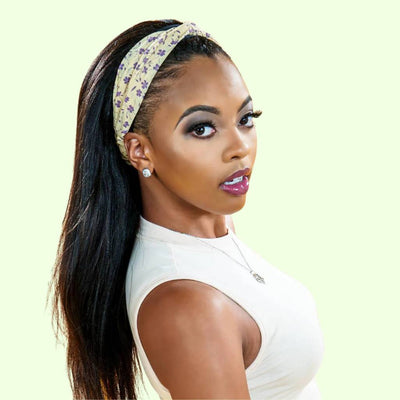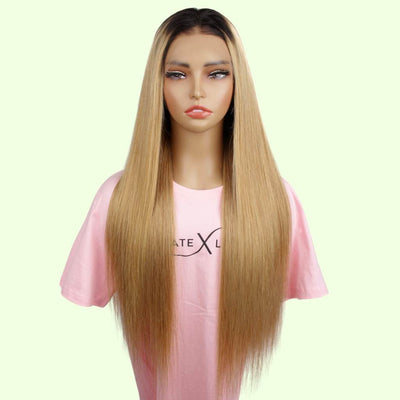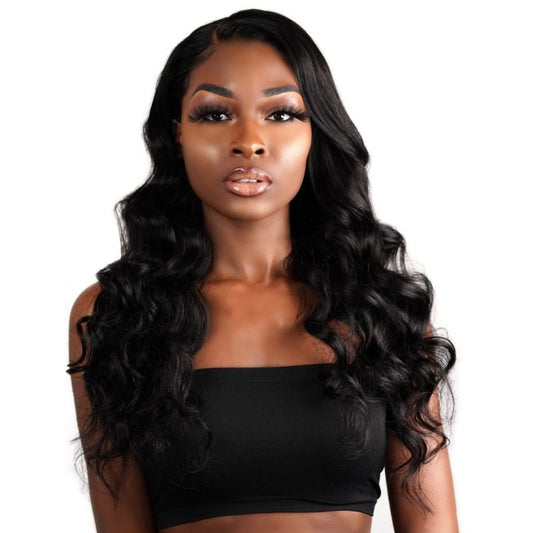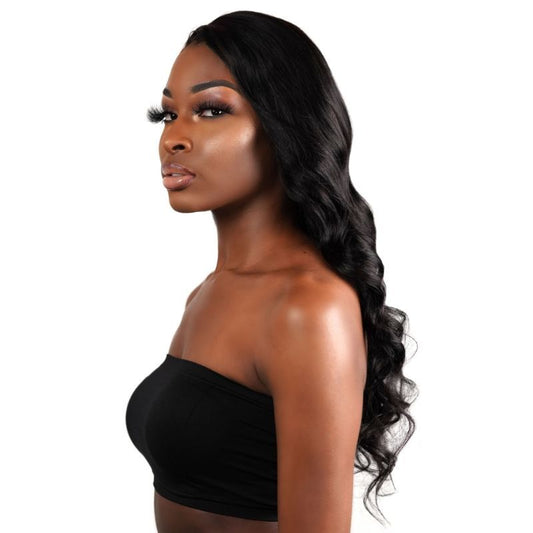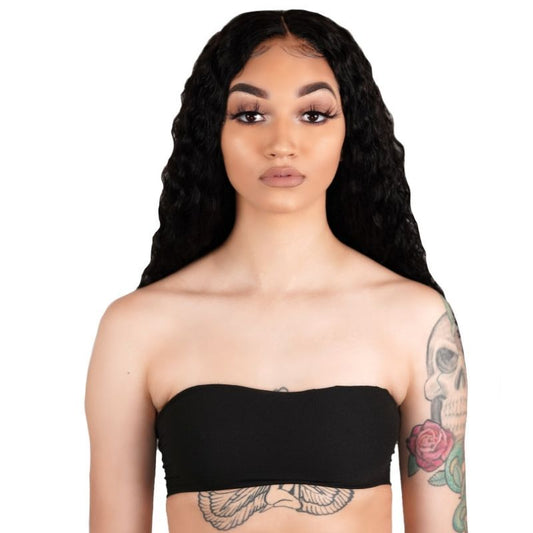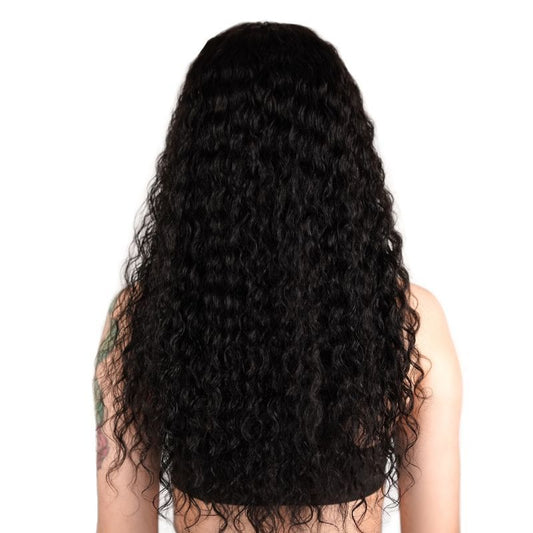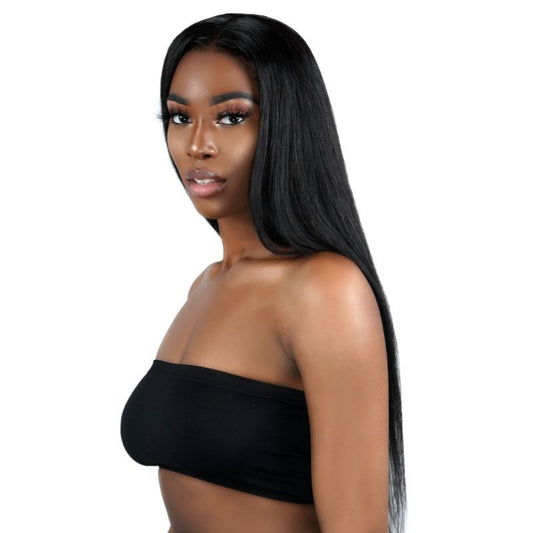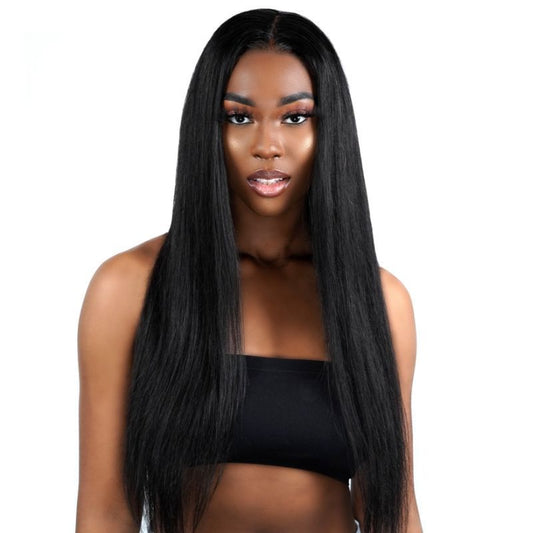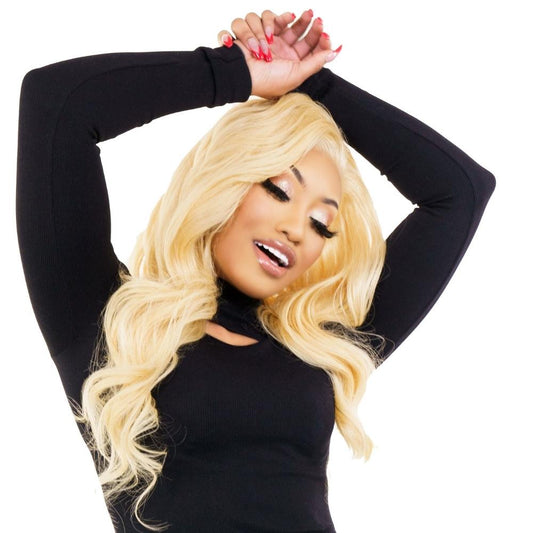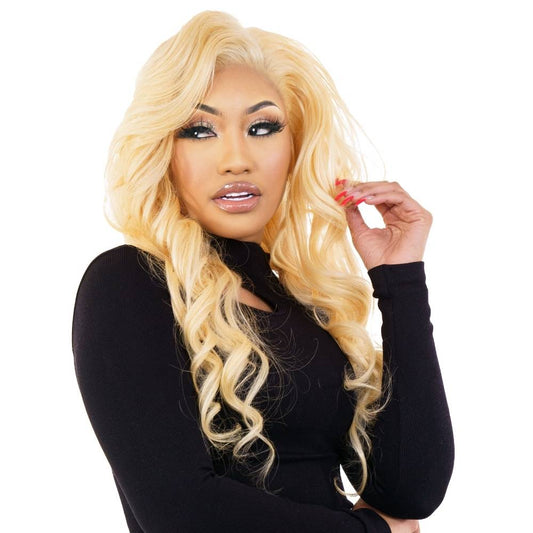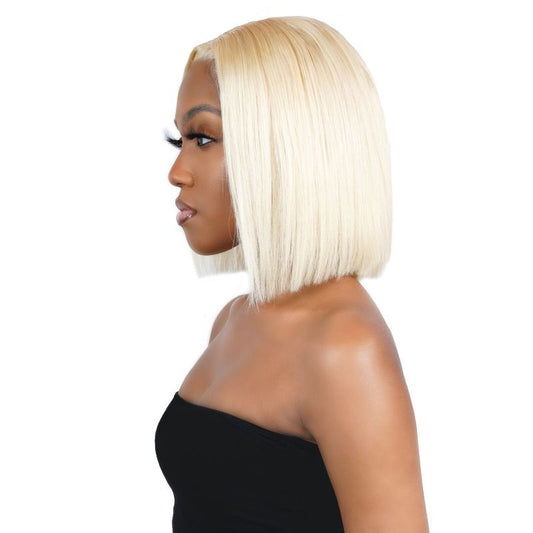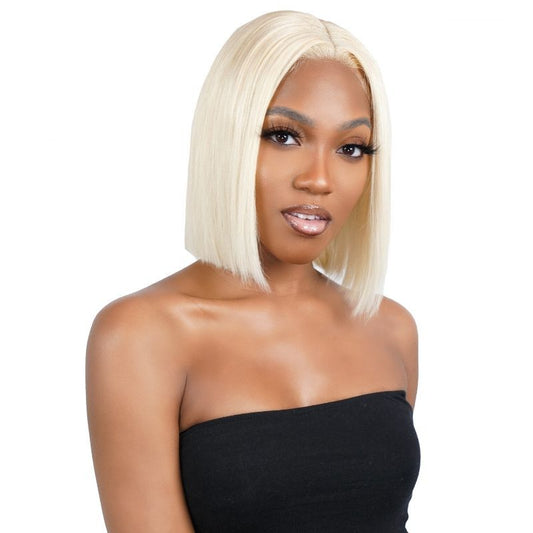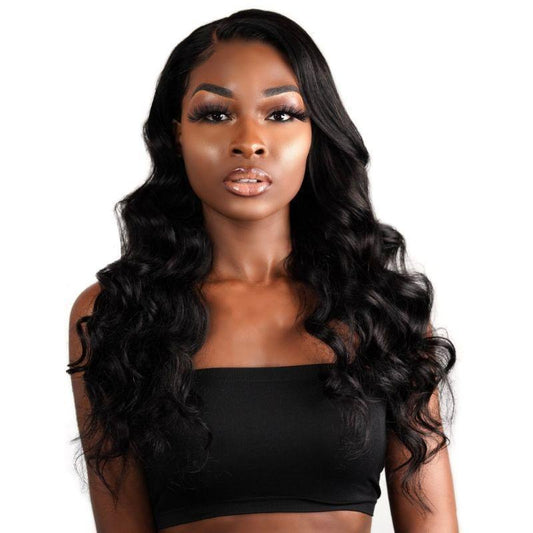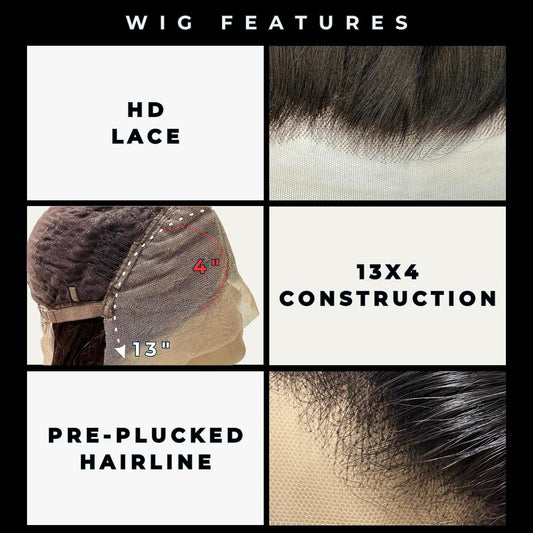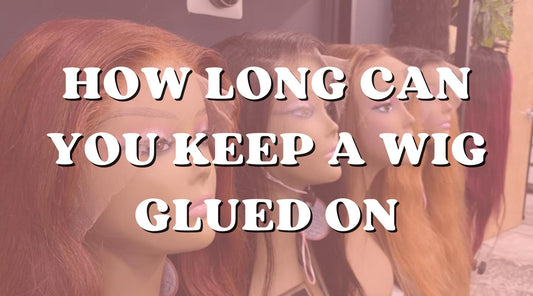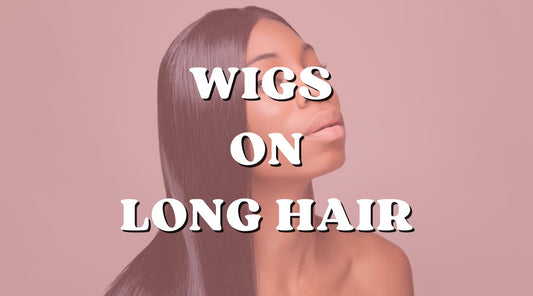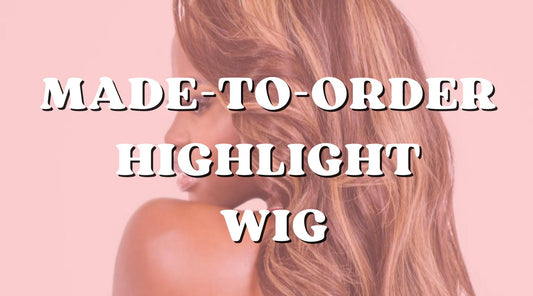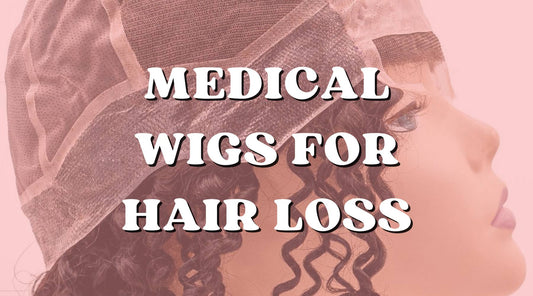1260 Memorial Drive
Atlanta, Georgia 30316
404-458-1330
Fine Hair vs. Thin Hair: Differences and Causes (And How to Treat with Medical Wigs)
Mikey MoranWith all the hair typing and curl pattern algorithms circling the internet, it can be hard to figure out your hair's unique identity and how to get the best hairstyle or medical wig for your hair's needs.
Two terms that seem interchangeable come to mind: fine and thin. 🆚
Everyone from your go-to hairstylist to your favorite YouTube hair guru uses these words to describe your hair.
But what do the words "fine" and "thin" mean in regard to your hair? Which word determines the health of your hair? And should you get medical wigs in the process of restoring your hair.
Below, we dish out the tea on how you can define these words for yourself.

Which Type Are You?
Figuring out your hair type is essential when understanding how to style it.
Having thin hair means that you should avoid heavy styling because thinning hair can lead to hair loss.
When I was transitioning from relaxed hair to natural hair, I noticed that my hair was initially thin. However, due to the misconceptions, I assumed that my hair was fine rather than thin.
When analyzing your hair, be sure to look into whether your hair feels heavy after product application.
When brushing your hair, does it feel difficult to work through? Do you need to use a lot of styling products to make it manageable?
If you can answer all this, then you probably don't have thin or fine hair. If you're anything like me, you have thick, coarse hair.
This means that you don't have to worry about the thin hair vs. fine hair debate.
However, if your hair is nothing like what I just described, then you might have thin or fine hair.
Keep in mind that it is possible to have both hair types and still style them in the way you need them.
 What Does "Fine Hair" Mean?
What Does "Fine Hair" Mean?
Fine hair relates to the texture of your hair.
You can think of texture as the "feel" of your hair. The shape of individual hair strands is cylindrical, and the diameter determines the texture of the strand and ultimately affects how it feels.
Fine hair is small in diameter (approximately less than 70 microns!) and feels like silk or satin. Larger diameters characterize medium to coarse hair. Typically, fine hair textures have fewer cuticle layers.
The cuticle layer is the outside layer of the hair strand. With fewer cuticle layers, hair products, and oils can easily penetrate through the hair with this texture.
Unlike medium and coarse hair textures, which contain more cuticle layers that hinder hair products from supplying your hair with the proper nutrients and moisture.
For this reason, fine hair textures tend to retain more moisture. A lack of protein characterizes fine hair as well.
Although able to preserve moisture, the bonds of fine textures are weak due to the lack of cuticle layers.
With fewer cuticle layers, the strand is not as strong as compared to medium or coarse hair textures.
Regular protein treatments can benefit the strength and overall health of the hair.
Having a fine hair texture is healthy and normal based on your genetics and ethnicity.
To determine whether your hair is fine, simply take a strand of hair and compare its size to a piece of sewing thread. If your hair is wispy or smaller in width than the thread, you most likely have fine hair.
You can also close your eyes while lightly touching your strands. If your hair feels like satin or silk, it is most likely of a fine texture.

Is My Hair Thinning?
Although often used as a synonym for fine hair, the term thin hair does not describe your strands' specific characteristics.
Thin hair refers to the density of your strands per square inch of your scalp. In other words, thin hair refers to how many individual hair strands are close to one another on your head.
People with thin hair will most likely have a lot more scalp showing when parting their hair or with particular styles.
Genetics and excessive strain from certain hairstyles can cause thin hair.
Age and pregnancy can also affect the thickness of your hair and cause Postpartum Hair Loss. Substantial manipulation will also result in thinner hair.
You can be stressed of your hair thinning in front of your eyes, you can compensate with it with a Curly Silicon Skin Medical Wig and let your scalp recover.

Thinning Hairstyles
If you have thin hair, choose styles that do not require you to groom and touch your hair daily.
If you are wearing extensions, braids, twists, or even wigs for an extended period, these styles can add strain to your hair, especially around the perimeter or hairline unless you're wearing a medical wig like the Curly Mono Lace Front PU Wig.
Be sure to take breaks in between highly manipulative hairstyles to give your hair rest and time to restore strength to the strands.
On average, we lose approximately one hundred strands per day from shedding.
However, if you are losing more strands than the average, then you may be experiencing hair thinning.
Specified vitamins, supplements, and specialized hair care products are available to counteract this effect.

What Is Fine Hair?
I'm sure you're wondering, what is fine hair?
Fine hair refers to the texture or feel of your hair. Fine hair has small diameters and feels like satin.
Thin hair describes your hair's density on your scalp. Shedding off one hundred strands per day is average.
However, shedding over this amount can be categorized as thin.
Since fine relates to texture and thin refers to density, you can have many different combinations of hair texture and density with hair care routines specific to each one.
It's time to search for your next hairstyle that caters to your hair's needs and slay!

Can I Have Fine and Thin Hair?
Yes!
Since fine hair and thin hair describe two different aspects of your hair, it is possible to have both fine and thin hair.
People with a combination of both fine and thin hair should take gentle care of their hair, as too much strain or heavy manipulation can cause the strands to break or weaken.
Opt for hairstyles that do not require daily styling and arranging. We recommend choosing protective styles that are gentle and give your hair a break.
Instead of traditional sew-ins, try clip-in extensions, tape-in extensions, or medical wigs. You will be able to achieve the same gorgeous style while letting your hair thrive!
People who have fine and thick hair may struggle with maintaining enough volume.
To get that fabulous diva-goddess mane, blow dry or diffuse your hair while your head is upside down.
The magic is in the roots, and it ensures that they are fluffy and able to give you the volume you deserve.
For people who have a combination of coarse and thin hair, opt for styles that do not require a lot of parts.
This way, you will be able to enjoy your natural volume and easily hide the exposed areas of your scalp.

What about Styling?
Styling these kinds of hair types isn't always an easy process.
Many people with thin hair complain that it's difficult to style their hair. However, if you use the right tools, you won't find an issue with styling.
If you have mixed types of hair, you won't have a problem with your styling either. There are plenty of resources available for you to use.
Don't forget to be adventurous with your product usage as well. Do whatever you can to get the perfect style and hair type for you.
Also, depending on your hair type, you'll need to make sure that you don't rely on the heat too much.

Medical Wigs for Thin Hair?
If your hair is becoming noticeably thin for any health or environmental reason, you can always go with a medical wig.
From PU to fine mono medical wig base, you can choose a comfortable set-up for your daily lifestyle with styles from Straight to Curly Medical Wigs.
The wig concept is considerably the best protective style.
You can get your hair back while looking stylish throughout the process with a Curly Fine Mono Base Medical Wig.

You Are Ready to Slay!
Now that you are in the know, you can confidently care for your hair with the royal treatment!
Next time your stylist, favorite YouTuber, or best girlfriend asks you about the difference between fine and thin hair, you can share this new knowledge.
Did you learn something new or have more info to add? 🙌🏿
Please let us know in the comments.
We would love to hear from you!
Learn more about the Hormonal Hair Loss too!

